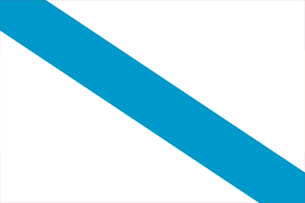Achegándonos ao LHC
|
En 1989, Tim Berners-Lee, un xove científico que traballaba no CERN, creou o HYPERTEXT para permitir unha mellor comunicación entre os científicos que estaban traballando en diferentes proxectos. Coa axuda de Robert Caillou e un pequeno equipo creouse o HTML, http, URLs, o primeiro Servidor, o primeiro navegador e o primeiro editor html. Más sobre esta historia en |
 |
|
Cando o CERN decidiu permitir a libre distribuzón da Web o seu progreso foi imparábel.
Dun único servidor ao comezo dos 90 téñense sobrepasado xa os 45 millóns. Nun mundo gobernado polos intereses económicos, chama a atención a absoluta transparencia coa que traballa esta institución e a súa xenerosa decisión en relación á WWW. Agora, é o tempo dunha nova rede: G R I D. |
|
|
Berners-Lee usou a computadora NeXTcube no CERN como primeiro servidor web do mundo. Esta máquina (que entrou no mercado a finais de 1988) foi creada en base ao microprocesador Motorola 68030, a 25 MHz, que foi a máis potente no seu momento.
Taken from https://es.m.wikipedia.org/wiki/Archivo:First_Web_Server.jpg |
|
|
Unha enquisa "online" dirixida por CNN news group en 2007 situou the World Wide Web como a primeira das sete marabillas modernas do mundo. A World Wide Web gañou cun 50 % dos votos (3665 votos). O segundo foi o CERN outra vez, co 16 % dos votantes (1130 votos) premiando así ao acelerador LHC. Outras das obras que foron consideradas entre as marabillas modernas son a Presa das Tres Gorxas de China, o Túnel da Mancha e o viaducto Millau de Francia. |
|
| Unha placa, situada nun corredor do edificio 2 do CERN en Meyrin, lembra o nacemento da WWW. Trátase dun lugar absolutamente "impersonal" como calquera outro, onde Tim Berners Lee e Robert Caillou, usando un NeXTcube, una computadora de NeXT, crearon o primeiro servidor web da historia. A pesar da modestia do lugar, e de que moitos descoñecen o feito de que a WWW naceu no CERN, estamos a falar dun fito fundamental da historia moderna da humanidade. |  |
O texto desa placa di: Nos despachos deste corredor todas as tecnoloxías fundamentais da World Wide Web foron desenvolvidas. Comezou en 1990 como resultado do traballo iniciado por Tim Berners-Lee en 1989, sendo desenvolvido primeiramento este esforzo entre un despacho de edificio 31 do Computing and Networking Division (CN) e outro do edificio 2 da Electronics and Computing for Physics Division (ECP). En 1991 o equipo trasladouse a estes despachos, daquela pertencentes á ECP. Estivo composto por dous membros do staff do CERN, Tim Berners-Lee (GB) e Robert Cailliau (BE), axudados por un número de Fellows, Technical Students, a Cooperant e Summer Students. A finais de 1994 Tim Berners-Lee deixou o CERN para dirixir o WWW consortium (W3C), unha organización a nivel mundial adicada a levar a Web ao seu máximo potencial. O W3C foi fundado coa axuda do CERN, a Comisión Europea, o Massachusetts Institute of Technology (MIT), o Institut National pour la Recherche en Informatique et en Automatique (INRIA), e o Advanced Research Projects Agency (ARPA). En 1995 Tim Berners-Lee e Robert Cailliau recibiron o ACM Software System Award pola World Wide Web. En 2004, Tim Berners-Lee foi premiado co primeiro Millenium Technology Prize otorgad pola Finnish Technology Award Foundation. The CERN Library Xuño 2004 Para ter máis información sobre como o CERN contribúe á sociedade pódese visitar o seguinte Sitio Web do CERN:
https://home.web.cern.ch/
|
|
|
AUTORES Xabier Cid Vidal, Doctor en Física de Partículas (experimental) pola Universidad de Santiago (USC). Research Fellow in experimental Particle Physics no CERN, desde xaneiro de 2013 a decembroe de 2015. Estivo vencellado ao Depto de Física de Partículas da USC como becario "Juan de la Cierva", "Ramon y Cajal" (Spanish Postdoctoral Senior Grants), e Profesor Contratado Doutor. Desde 2023 é Profesor Titular de Universidade nese Departamento (ORCID). Ramon Cid Manzano, foi catedrático de Fïsica e Química no IES de SAR (Santiago - España), e Profesor Asociado no Departamento de Didáctica de Ciencias Experimentais da Facultade de Educación da Universidad de Santiago (España), ata o seu retiro en 2020. É licenciado en Física, licenciado en Química, e Doutor pola Universidad de Santiago (USC).(ORCID). |
CERN CERN Experimental Physics Department CERN and the Environment |
LHC |
NOTA IMPORTANTE
Toda a Bibliografía que foi consultada para esta Sección está indicada na Sección de Referencias
© Xabier Cid Vidal & Ramon Cid - rcid@lhc-closer.es | SANTIAGO |





